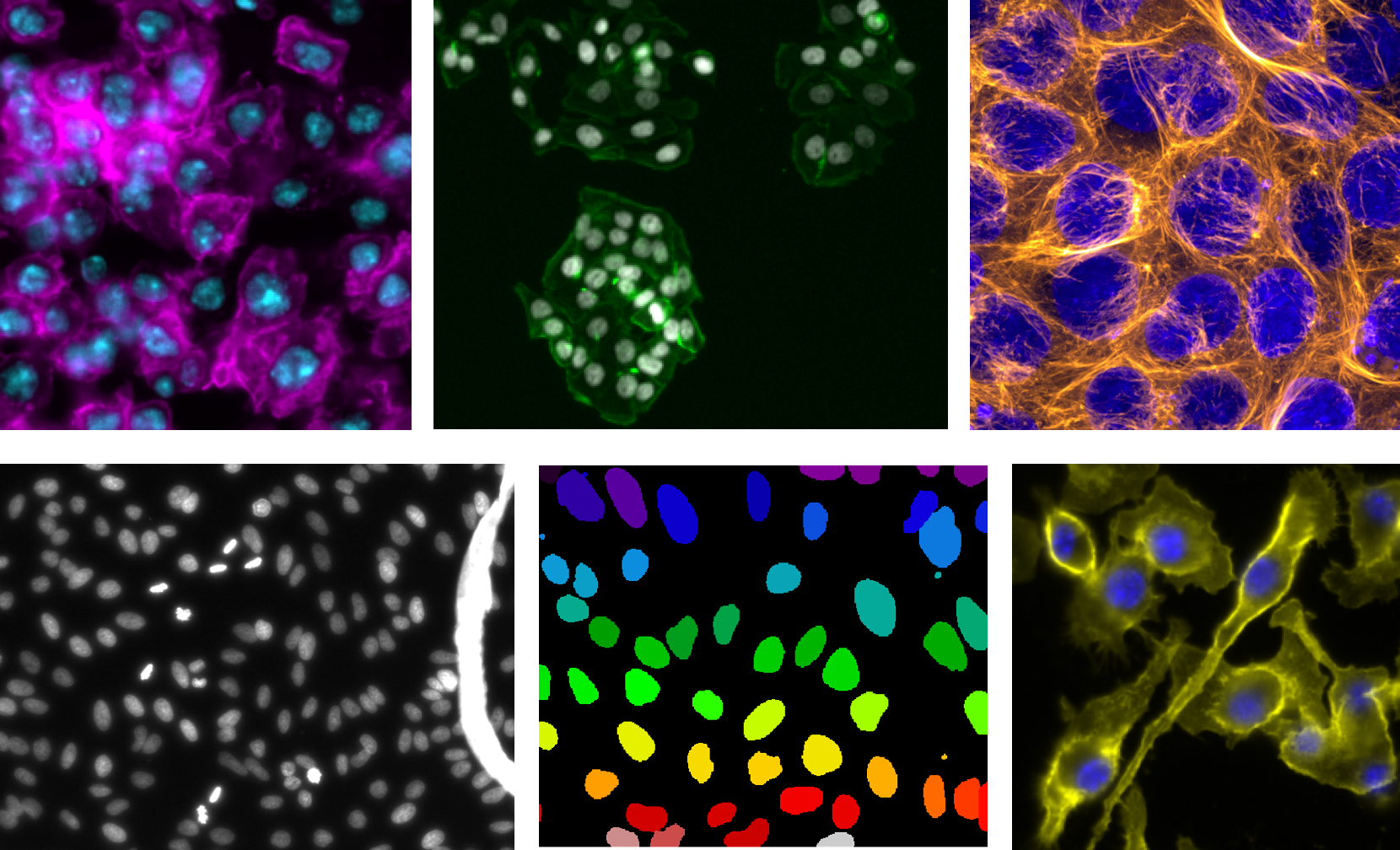Welcome#
Welcome to the world of bioimaging and bioimage analysis! 🎉

Fig. 1 Montage of fluorescence microscopy images from BBBC 1 (Broad Institute). Images shown are from experiments BBBC007, BBBC008, BBBC034, BBBC038, BBBC039, and BBBC020 from left to right, top to bottom.#
What is this book?#
This book is a companion website to our paper “A biologist’s guide to planning and performing quantitative bioimaging experiments” 2. Our goal is to provide recommendations and a curated set of resources for biologists looking to understand the factors that impact their fluorescence microscopy experiments.
This book is a collaborative effort from experts in biology, imaging, image analysis, and data management, interpretation, and presentation. Our tips and recommendations come from real experiences training and working with biologists who are beginners to bioimaging and bioimage analysis. When starting out in a new field, you often don’t know what you don’t know. Here we provide context, tips for avoiding common beginner errors, and a focused list of high-quality, open source resources (full list available here). We use icons to indicate the type of resource:
Icon |
Resource type |
|---|---|
📖 |
Textbook (free online) |
📄 |
Scientific paper |
💻 |
Software or software notes |
🌐 |
Website |
🎓 |
Lecture notes or slides |
🎥 |
Video |
🔢 |
Math-heavy theory |
What isn’t this book?#
This book is not meant to be an exhaustive list of all resources. Many others have curated excellent such resources(see here 3 and here and here 4). Our goal is to create a more streamlined, beginner-accessible guide.
This book is not a protocol or step by step guide, though certain resources we link to might be. Each subsection from sample prep to data interpretation are massive topics that we can’t exhaustively cover in a guide for beginners.
How to use this book:#
Please select a section using the navigation panel on the left to get started or begin with sample preparation by clicking the “Next” button below ↘️.
Most sections will guide you through individual subtopics using some or all of the following list of questions:
What is it?
What are my options?
How do I do it?
Where can things go wrong?
Where can I learn more? (links to resources)
Which questions are used and the exact phrasing may vary by section, but we hope this structure helps guide users to a deeper understanding of each subtopic.
What if my resource/topic is not included?#
Please feel free to open an issue or pull request to contribute! We hope for this to be a living document reflecting the best practices and resources available.
